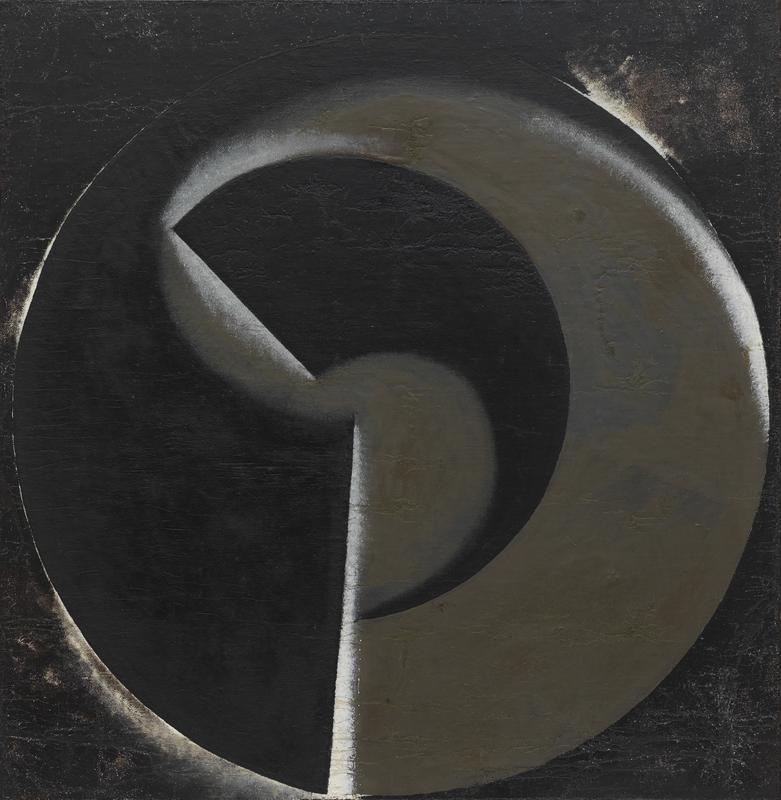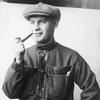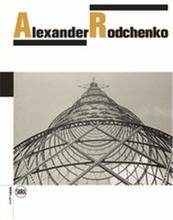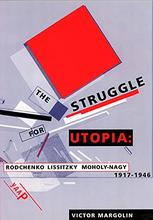More about Non-Objective Painting no. 80 (Black on Black)
- All
- Info
- Shop

Sr. Contributor
Unlike your typical mall goths, when Alexander Rodchenko started making art only in black, it wasn’t just a phase - okay, mom?
This black on black work is one from a series of eight paintings that Rodchenko made in direct response to white on white paintings that Kazimir Malevich had painted earlier in 1918. Now, Rodchenko wasn’t just being petty when he did this. The art that Malevich and Rodchenko were making represented a larger rift in how Russians perceived art after the Russian Revolution. For Malevich and the Suprematists, spirituality was the name of the game, and painting in all white was an expression of the soul in its purest form. Rodchenko and the Constructivists, on the other hand, wanted to explore the pure materiality of painting with just black. Rather than suggesting some grand message, Rodchenko just wanted viewers to experience what was on the canvas. He must have been real fun at parties.
Rodchenko exhibited the series at a state-sponsored exhibition that featured Non-Objective Art and Suprematism. The public received them well, cementing Rodchenko’s place at the helm of innovation in Soviet art and artistic philosophy. As Rodchenko explored the relationship between art and politics, he developed his theory of Constructivism, which was basically like non-objective art on steroids. Rodchenko’s theories gained traction pretty quickly. Constructivism basically became the official art of the early Soviet government, and it happened almost immediately. He also taught at Vkhutemas, the State Higher Artistic and Technical Studios, from 1920 to 1930, where he could spread his beliefs that art was essentially a branch of mathematics.
For Rodchenko and his comrades, the art of the revolution was practical and based in real things like color, form, math, and geometry. Even after his black on black paintings, Rodchenko and his peers continued to push formalist reduction even further. After reaching the apex of simply covering surfaces with primary colors and calling it art, Rodchenko declared that he had killed the entire genre of painting. After realizing that neither painting nor sculpture could truly serve the aims of the people, Rodchenko and his followers turned to graphic design and photography.
Unfortunately, the socialist utopia that Rodchenko envisioned quickly began to spiral into the harsh, autocratic regime that became the Soviet Union. But the idea of Constructivism didn’t die with Rodchenko, even after he transitioned to the graphic arts. Stand in the presence of a Richard Serra sculpture, and you’ll hear echoes of the Soviet quest for merging art with life through intense communion with the materials of art themselves. And as for the feud between Rodchenko and Malevich, the two Russian artists were far from settling that score. The same all-black versus all-white debate continued long after they both stopped making art. For example, Robert Ryman painted in white, while Ad Reinhardt chose black.
Sources
- Arnason, H.H., and Elizabeth C. Mansfield. History of Modern Art. Upper Saddle River, NJ: Pearson Education, Inc., 2013.
- Harrison, Charles, and Paul Wood. Art in Theory, 1900–2000: An Anthology of Changing Ideas. Malden, MA: Blackwell Publishing, 2014.
- Museum of Modern Art. “Aleksandr Rodchenko.” Exhibition Interactives. 1998. https://www.moma.org/interactives/exhibitions/1998/rodchenko/texts/deat…. Accessed 30 April 2021.
- Museum of Modern Art. “Non-Objective Painting no. 80 (Black on Black).” Art and artists. https://www.moma.org/collection/works/78848. Accessed 30 April 2021.
- Smith, Roberta. “Art Review; When Radical Art and Politics Marched (Briefly) Hand in Hand.” The New York Times. 26 June 1998. https://www.nytimes.com/1998/06/26/arts/art-review-when-radical-art-and…. Accessed 30 A













